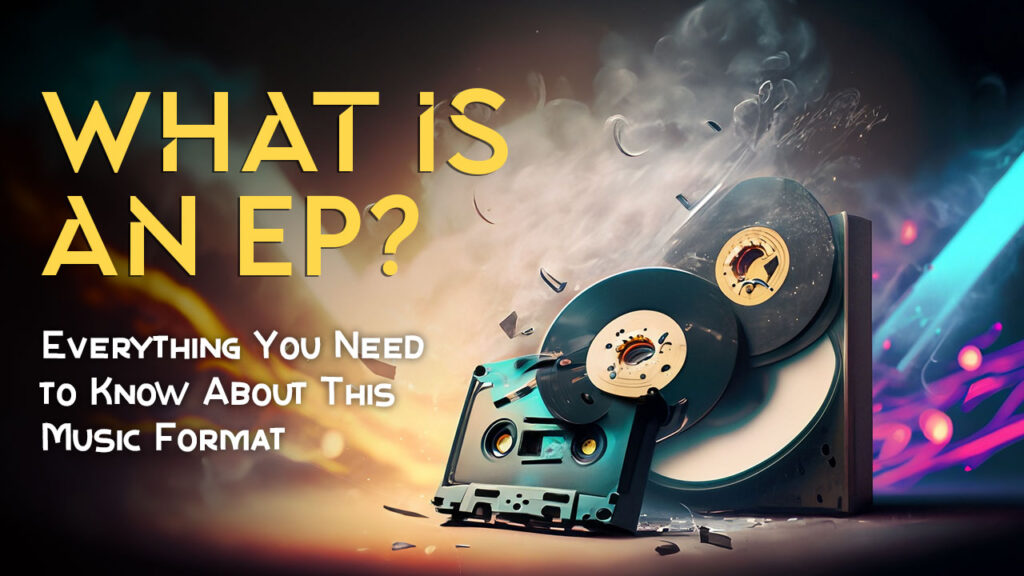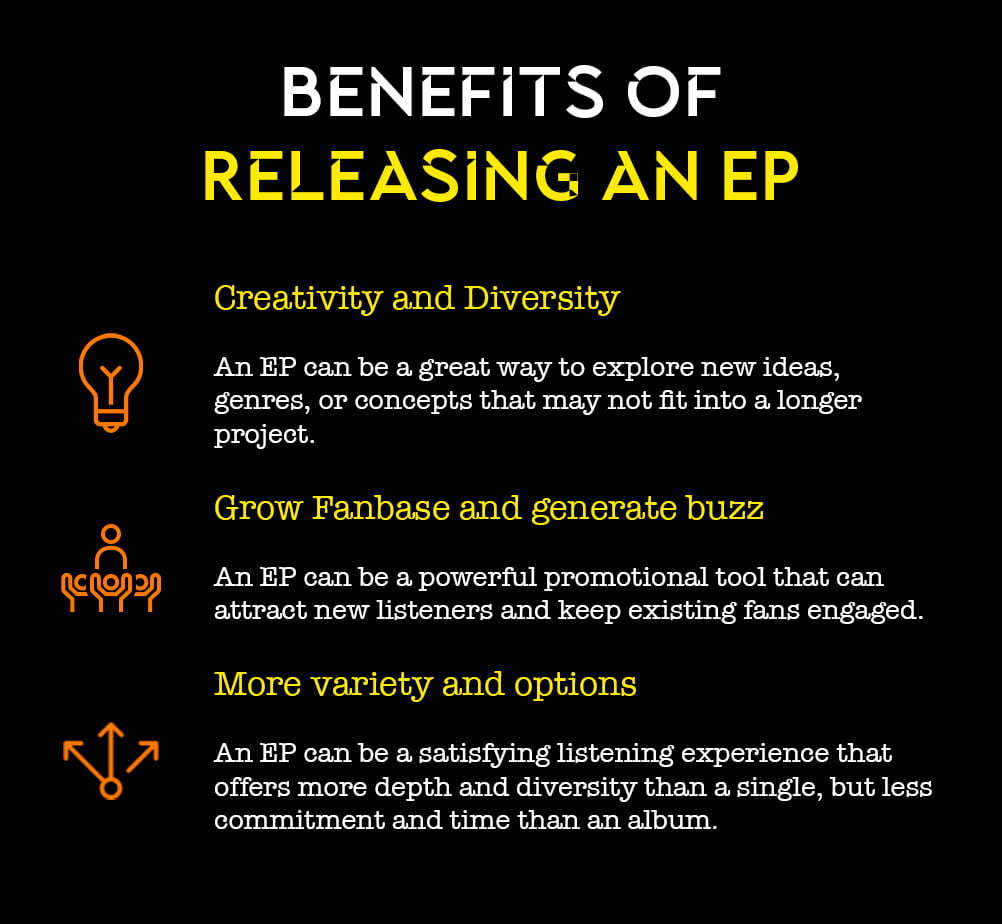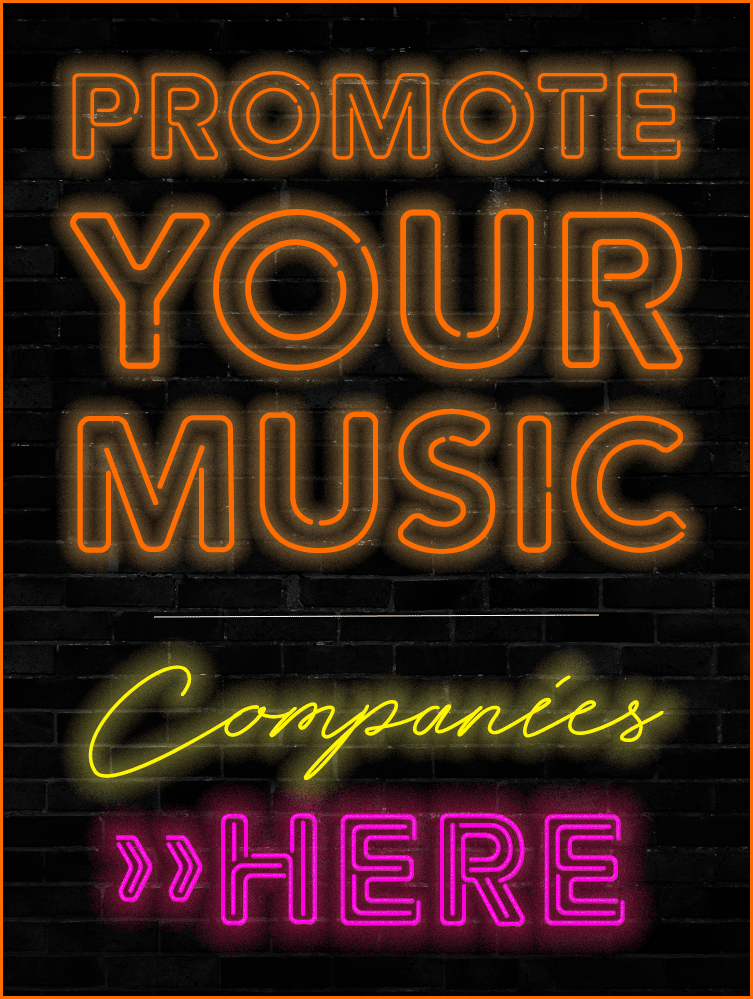What is an EP? If you’re a music lover, you have probably heard the term EP before. But do you know what it means and why it is used by many artists?
In this blog post, we will explain everything you need to know about EPs, from their definition and history to their benefits and differences from LPs.
Whether you are an aspiring musician or a curious listener, this post will help you understand this popular music format better.
What is an EP in music?
EP stands for extended play, which is a type of musical recording that contains more tracks than a single, but fewer than a full-length album.
EPs usually have between four to six tracks, and their total duration is typically around 25 to 30 minutes.
However, there is no strict rule about the number or length of songs on an EP, as some artists may choose to include more or fewer tracks, or longer or shorter songs.
The term EP originated from the vinyl record industry in the 1950s, when RCA Victor introduced a new format that could hold more music than the standard 7-inch single, but less than the 12-inch long play (LP) album.
These records were called extended play because they offered more playing time than singles, but were still cheaper and easier to produce than albums.
They were also marketed as mini-albums or collections of songs that could showcase an artist’s style or theme.
EPs became popular among various genres and artists, especially in the rock and pop scenes.
Some of the most famous EPs in music history include:
- The Beatles’ Long Tall Sally (1964)
- The Rolling Stones’ Five by Five (1964)
- Bob Dylan’s Bob Dylan Live 1961-2000: Thirty-Nine Years of Great Concert Performances (2001)
- Nirvana’s MTV Unplugged in New York (1994)
Today, EPs are still widely used by musicians across different styles and platforms.
They are often released on vinyl, CD, cassette, or digital formats, and they can serve various purposes, such as introducing new material, experimenting with new sounds, building anticipation for a full album, or satisfying fans’ demand for more music.
The Benefits of Releasing an EP
Releasing an EP can have many advantages for both artists and listeners. Here are some of the main benefits of this music format:
Creativity and Diversity
An EP can be a great way to explore new ideas, genres, or concepts that may not fit into a longer project. It can also be a place to include songs that did not make it to an album, such as B-sides, remixes, live versions, or covers.
Grow Fanbase and generate buzz
An EP can be a powerful promotional tool that can attract new listeners and keep existing fans engaged. By releasing an EP, an artist can showcase their talent and potential, and create anticipation for their future releases. An EP can also be a way to test the market and see how the audience responds to their music before investing in a full album.
More variety and options
An EP can be a satisfying listening experience that offers more depth and diversity than a single, but less commitment and time than an album. Listeners can discover new artists or songs through an EP, or enjoy more content from their favorite artists between albums. An EP can also be a way to support independent or emerging artists who may not have the resources or opportunities to release a full album.
The Difference between and EP and a Single
A single and an EP are two different types of musical releases that have different purposes and characteristics. Here are some of the main differences between them:
Single
- A single is a one-track release, usually ahead of time, to promote an album or a project in most cases.
- A single can also be a standalone song that is not part of any album or EP
- A single is typically less than 10 minutes long and has only one song on it.
EP
- An EP stands for extended play, which is a mini-album or a collection of songs that introduces an artist’s style or theme, or serves as a promotional tool for a full album.
- An EP usually has between three and six tracks, and its total duration is typically around 25 to 30 minutes.
- An EP can also be a way to express an artist’s creativity and diversity without committing to a full album.
Why artists release singles and EPs
- To generate buzz and interest for their music and upcoming projects
- To test the market and see how the audience responds to their music
- To showcase their collaborations or side projects
- To explore new ideas, genres, or concepts
- To distribute their music more easily and frequently
Some examples of famous singles and EPs are:
Single
Billie Eilish’s Bad Guy (2019), which was the lead single from her debut album When We All Fall Asleep, Where Do We Go? The song became a global hit and won several awards, including Record of the Year and Song of the Year at the Grammy Awards.
EP
Nirvana’s MTV Unplugged in New York (1994), which was a live acoustic recording of their performance for the MTV show Unplugged. The EP featured some of their most popular songs, such as Come As You Are, All Apologies, and The Man Who Sold the World, as well as some covers of songs by David Bowie, The Meat Puppets, and Lead Belly.
What Kinds of Artists Release an EP and Why?
EPs are not limited to any specific genre or style of music. They can be released by any kind of artist, from mainstream pop stars to underground indie bands.
However, some types of artists may use EPs more frequently or for different reasons than others. Here are some examples:
New or emerging artists
For artists who are just starting out or trying to break into the music industry, releasing an EP can be a smart and effective strategy. An EP can help them showcase their skills and originality, build their reputation and credibility, and attract attention from fans and labels. An EP can also be a way to fund their musical career and save money for a full album.
Established or successful artists
For artists who already have a solid fanbase and recognition, releasing an EP can be a way to maintain their relevance and momentum in the music scene. An EP can help them keep their fans interested and excited, offer them something fresh and different, and tease their upcoming projects. An EP can also be a way to express their artistic freedom and experimentation without compromising their commercial success.
Collaborative or side projects
For artists who work with other musicians or pursue other musical endeavors outside their main projects, releasing an EP can be a convenient and fun option. An EP can help them showcase their collaborations or side projects, introduce them to new audiences or markets, and explore their musical influences or passions. An EP can also be a way to celebrate their musical friendships or partnerships and have fun with their music.
This History of EPs
The history of EPs can be traced back to the early days of the vinyl record industry, when different formats and sizes of records were competing for the market.
Here are some of the key events and milestones in the evolution of EPs:
These are vertically cut 78 rpm discs known as “2-in-1” records, which have finer grooves than usual and can hold two songs on each side.
Aa 12-inch disc that can spin at 33 1/3 rpm and store up to 23 minutes of music on each side. This format becomes the standard for full-length albums.
A 7-inch disc that can spin at 45 rpm and hold up to 7.5 minutes of music on each side. This format becomes popular for mini-albums or collections of songs.
Especially in the UK and Europe, where they are often sold as gatefold covers with artwork and liner notes. Some of the most successful EPs of this decade include The Beatles’ Twist and Shout (1963), The Rolling Stones’ The Rolling Stones (1964), and The Who’s Ready Steady Who (1966).
As LPs dominate the market and cassette tapes emerge as a new format, EPs decline. However, some artists still release EPs for artistic or promotional reasons, such as David Bowie’s The Man Who Sold the World (1970), Pink Floyd’s A Nice Pair (1973), and Led Zeppelin’s The Song Remains the Same (1976).
Punk and indie bands, start to use EPs as a way to express their DIY ethos and distribute their music independently. Some of the most influential EPs of this decade include Minor Threat’s Out of Step (1983), R.E.M.‘s Chronic Town (1982), and The Smiths’ Hatful of Hollow (1984).
Alternative and underground artists experiment with different styles and sounds on their EPs. Some of the most acclaimed EPs of this decade include Nirvana’s MTV Unplugged in New York (1994), Radiohead’s My Iron Lung (1994), and Portishead’s Glory Times (1995).
As digital formats and online platforms allow artists to release their music more easily and frequently, EPs become more mainstream and accessible. Some of the most successful EPs of this decade include Coldplay’s Prospekt’s March (2008), Kanye West’s GOOD Fridays (2010), and Adele’s iTunes Festival: London 2011 (2011).
Artists use EPs to explore new genres, concepts, or collaborations. Some of the most innovative EPs of this decade include Frank Ocean’s Endless (2016), Beyoncé’s Homecoming: The Live Album (2019), and Billie Eilish’s Don’t Smile at Me (2017).
The LP vs the EP
The LP and the EP are two different but related formats of musical recordings. They both originated from the vinyl record industry, but they have evolved over time to adapt to different mediums and purposes.
Here are some of the main differences between an LP vs an EP:
- Length: An LP is a long-playing record that usually contains between 10 to 12 tracks and has a total duration of around 40 to 60 minutes. An EP is an extended play record that usually contains between four to six tracks and has a total duration of around 25 to 30 minutes.
- Format: An LP is typically released on a 12-inch vinyl disc that spins at 33 1/3 rpm, or on a CD or digital download that can store more data. An EP is typically released on a 7-inch vinyl disc that spins at 45 rpm, or on a CD or digital download that can store less data.
- Purpose: An LP is usually intended as a full-length album that showcases an artist’s complete musical vision or concept. An EP is usually intended as a mini-album or collection of songs that introduces an artist’s style or theme, or serves as a promotional tool for a full album.
- Price: An LP is usually more expensive than an EP, both for production and consumption. An LP requires more time, money, and resources to produce.
Famous EP’s in Different Generes
There are many famous EPs in different genres of music, and some of them have become classics or milestones in their respective fields.
Here are some examples of well-known EPs in various genres, along with their release dates and some of their tracks:
Rock
The Beatles’ Long Tall Sally (1964), which features covers of rock and roll songs by Little Richard, Chuck Berry, and Larry Williams. Some of the tracks are Long Tall Sally, I Call Your Name, and Slow Down.
Pop
Beyoncé’s Homecoming: The Live Album (2019), which is a live recording of her performance at the 2018 Coachella festival. Some of the tracks are Crazy in Love, Formation, and Single Ladies (Put a Ring on It).
Metal
Slayer’s Haunting the Chapel (1984), which is one of the first thrash metal EPs and showcases the band’s speed and aggression. Some of the tracks are Chemical Warfare, Captor of Sin, and Haunting the Chapel.
Punk
Minor Threat’s Minor Threat (1981), which is a seminal hardcore punk EP that expresses the band’s straight edge philosophy and DIY attitude. Some of the tracks are Minor Threat, In My Eyes, and Out of Step.
Indie
The Smiths’ Hatful of Hollow (1984), which is a compilation of singles, B-sides, and BBC sessions that showcases the band’s jangly guitar sound and witty lyrics. Some of the tracks are William, It Was Really Nothing, How Soon Is Now?, and Heaven Knows I’m Miserable Now.
Hip hop
N.W.A.‘s 100 Miles and Runnin’ (1990), which is the first EP by the influential gangsta rap group after the departure of Ice Cube. Some of the tracks are 100 Miles and Runnin’, Just Don’t Bite It, and Sa Prize (Part 2).
Electronic
Boards of Canada’s In a Beautiful Place Out in the Country (2000), which is an ambient electronic EP that evokes nostalgia and mystery. Some of the tracks are Kid for Today, Amo Bishop Roden, and In a Beautiful Place Out in the Country.
Jazz
Martial Solal’s À bout de souffle (1960), which is the soundtrack for the French New Wave film Breathless by Jean-Luc Godard. Some of the tracks are La mort, Poursuite, and Duo.
Related Posts
- Good Music From 2014 : 10 Songs To Remember
It is difficult to pinpoint exactly why we had such good music from 2014, since…
- Music Distribution Companies Compared
Looking to get your music out there and permeate every corner in the world? In…
- 10 Catchy Pop Songs You Will Listen To and Love
Pop Songs When you think of great pop songs, depending on your generation, you might…
- New Songs and Today's Top Hits - Playlists
New Songs Which new songs are shaking up the airwaves? What are today’s top hits?…
- What is Indie Music and Where Can You Find It?
When you envision indie music, what comes to mind? It's increasingly clear that independent musicians…





